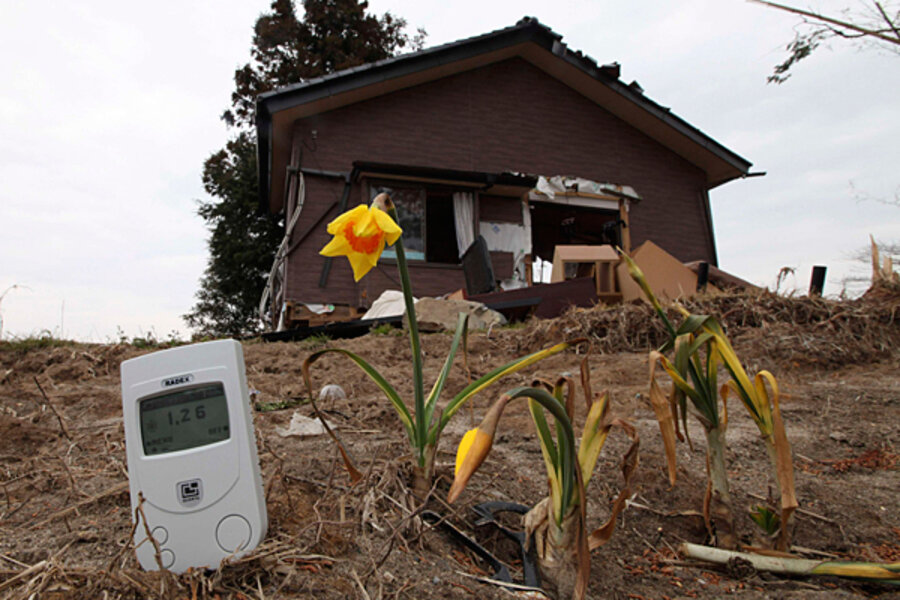Japan expands Fukushima evacuation zone. Will residents ever return home?
Loading...
| Washington
As new earthquakes rattle the devastated Fukushima Daiichi nuclear plant Japanese officials are urging more people to evacuate the area.
The aftershocks themselves aren’t the cause of the new evacuation push. Instead, Japan’s government is becoming increasingly concerned about radiation “hot spots” outside the existing 12-mile evacuation area where radiation levels may be high enough to pose long-term health risks.
That’s why residents in the new evacuation areas don’t have to leave right now. Instead, they have a month to pack up before they have to depart. Annual radiation exposure in the zone – which includes Katsurao Village, Namie town, Iitate Village, and parts of some other towns – likely will total about ten times the level of natural background radiation, said Chief Cabinet Secretary Yukio Edano on Monday.
“This is not an emergency measure that people have to evacuate immediately,” said Edano.
Will Japanese nuclear evacuees ever return to their homes? After all, there is still an exclusion zone of 19-mile radius around the Chernobyl nuclear plant. No one has lived within this area since the 1986 Chernobyl disaster.
It’s likely that this won’t happen in Japan, however, unless Fukushima Daiichi releases much more radiation than it has already.
Partly this is because Japan is a much more densely settled nation than Ukraine, where Chernobyl is located. The Japanese government cannot afford to have a large “no-go” zone smack in the middle of the nation’s northeast region. Too many people and businesses would have to be permanently relocated.
Partly it is because Japan is a wealthy nation. It is likely to be able to bear the high costs of scraping up and storing or decontaminating the soil from highly radioactive areas. Less contaminated areas within the evacuation zone could be washed or capped with new soil.
Tokyo Electric Power Company workers are already doing this within the grounds of Fukushima Daiichi itself. They are using remote-controlled bulldozers and power shovels to remove radioactive rubble from damaged areas, notes an update from the US Nuclear Energy Institute, a group that represents firms in the nuclear power industry.
That said, right now the hot spots are a matter of “grave concern,” said Edwin Lyman, a senior scientist in the Global Security Program of the Union of Concerned Scientists, during a briefing for reporters last week.
Many of these spots are northwest of the Fukushima plant, in the direction where prevailing winds have been blowing since the accident. Precipitation washes radioactive material out of the air unevenly, causing some areas to be harder hit by contamination than others.
Some residents of the region have complained of contradictory statements from government officials and uncertainty about what they should do. Japan’s waffling on whether to order hot spot residents to leave their homes has caused unnecessary confusion, say experts at some environmental organizations.
Greenpeace sent specialist teams of radiation monitors to the region earlier this month and began calling for hot spot evacuations prior to the Japanese government’s move in that direction.
“We welcome the decision by Japan’s government to evacuate areas outside the initial Fukushima 20km zone, however it needs to keep making decisive action to protect people from the contamination risks created by the Fukushima Daiichi crisis,” said Rianne Teuele, a radiation expert and leader of a Greenpeace monitoring team, in a statement released Monday.





